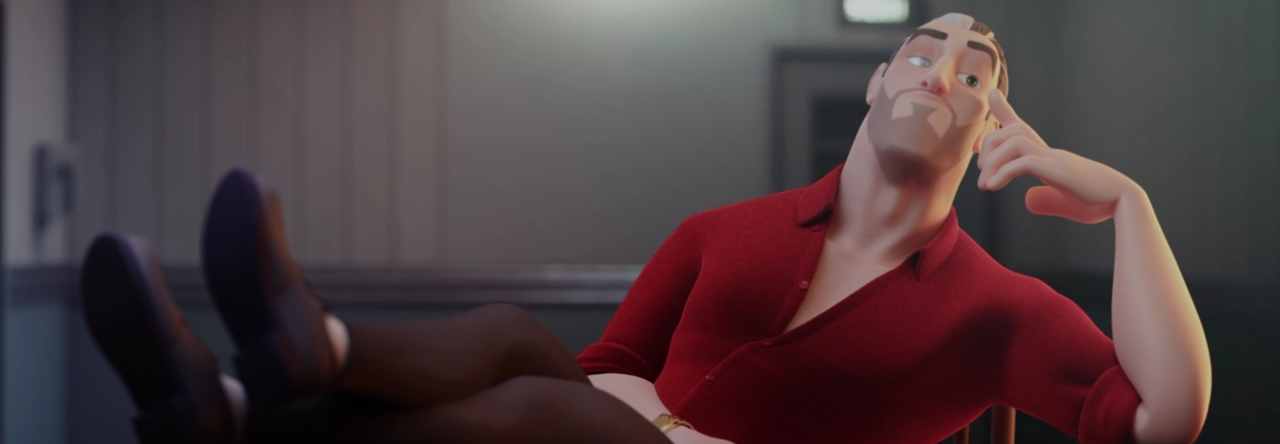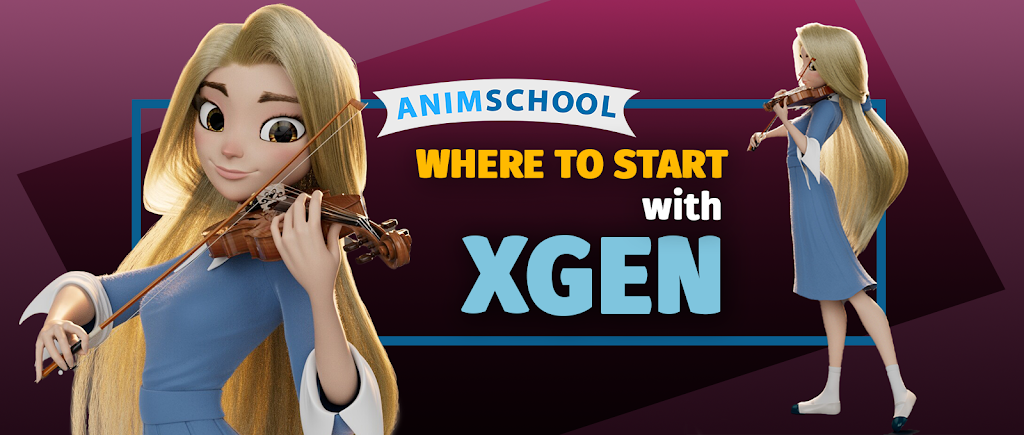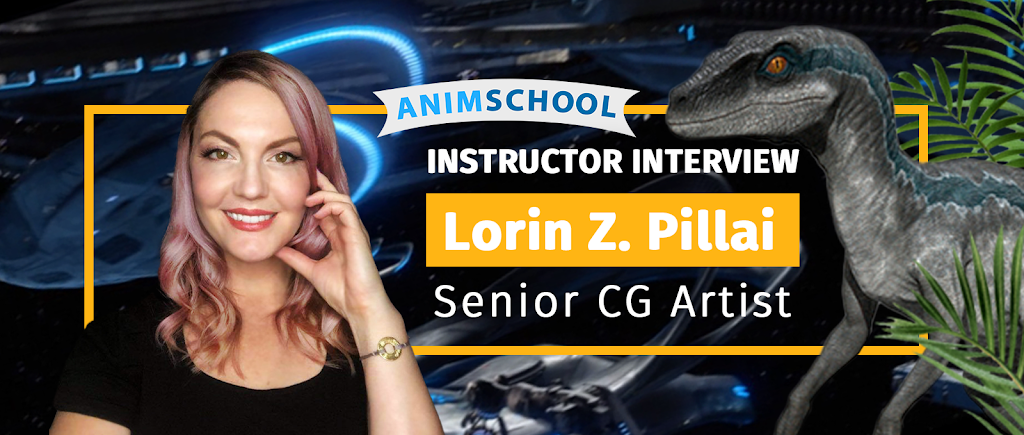Whether it’s to make grass or hair, XGen is a powerful tool within Maya that can help take your models to the next level. In the tutorial below, AnimSchool Instructor Koji Tsukamoto shows us how to get started in XGen.
AnimSchool Student Charles Lee


Whether it’s to make grass or hair, XGen is a powerful tool within Maya that can help take your models to the next level. In the tutorial below, AnimSchool Instructor Koji Tsukamoto shows us how to get started in XGen.
AnimSchool Student Charles Lee

Lorin Z. Pillai is an experienced and accomplished artist who has worked in a variety of roles in the animation and VFX industry. With a background that includes work on big-budget VFX features, commercials, gaming, and animation, Lorin has a diverse set of skills that have helped her succeed in the industry.
Lorin learned VFX, texturing and modeling at Gnomon School of Visual Effects. After graduating, she worked in VFX feature, then quickly transitioned to gaming where she shipped three titles. She then moved on to Nickelodeon for almost four years and then worked at DreamWorks for nearly seven years! Currently, Lorin works at FuseFX as an Asset Lead. She serves as a mentor and committee board member for the organization, Women in Animation.
Lorin also teaches Materials and Texturing at Animschool, a comprehensive 10 week course.
We recently had the opportunity to speak with Lorin about her experience and journey in various industries she’s been a part of.
Hi Lorin! Tell us about yourself and your journey into the Animation/VFX industry.
I’ve jumped around a lot! My first job was working on a big-budget VFX feature, then I did some short contracts in commercials, onto gaming as an environment artist–which was my intended area of the industry. After a few years and three game titles shipped, I was ready for a new experience. I moved over to animation, between Nickelodeon and then Dreamworks, I had the opportunity to work on hundreds of animated episodes and fourteen shows. I was tremendously fortunate to have a direct hand in creating many of the main characters and sets for some of these shows, as well as leading the look and feel. After ten years in animation, I felt the need for a new experience, I wanted the opportunity to stretch and learn more. I switched over to live-action VFX episodic, and I’ve had the distinct pleasure of working on many shows for Hulu, Disney+, Marvel, and others.
As someone who went to in-person art colleges, can you talk about the pros and cons of doing an online program like AnimSchool compared to traditional universities?
Personally, I lost a lot of time (and gas money) driving to school. And I still had a home system to work on as I couldn’t always be at school. Sometimes teachers could only meet with me when I wasn’t scheduled to be at school, meaning extra unplanned trips. When completing
projects for a reel and finishing classes, time counts. The ability to stay connected while seamlessly switching over from class time to project time (and also not transferring files between my home machine and the school lab also makes a big difference) The main con would be lab access, if a lab at school was empty I could commandeer multiple machines to render out my finished frames.
Who/what are some of your biggest inspirations that influence your work?
Mary Blair is a huge inspiration for me. She was one of the first female artists in animation to really be recognized. Though she was more of a concept artist, she worked in several areas in animation and was one of the first women to be given creative freedom in our industry.
Can you tell a little bit about your experience as a woman in the Animation/VFX industry?
I’ve seen it evolve to be less about my gender over the years. It felt prevalent when it was early in my career, but has seemingly balanced out a lot more.
Have you seen and/ or experienced a culture shift over the last 10 years with the rise of communities such as “Women in Animation” and “Rise Up Animation”?
I’ve definitely seen and personally experienced it. I was a bit disheartened to see when I first started in the industry that though there were women employed, mainly they filled out the lower ranks. Very few women were in decision-making positions. And it was not evenly balanced either, it was still mainly men. Now there are more opportunities for women, and choices for who moves up in the ranks feels more merit-based overall.
You’re also an award-winning fantasy writer! Tell us a little about this passion as well as why it’s important for working artists to have passion projects.
partly what lookdev is. And I love transitioning that to the page! Storytelling in its various forms is a lot of what many of us do in animation. If you’re nearing completion in school, getting that job, or joining that team … may be the biggest, most consuming goal for many of us. After a few years though, it starts to become apparent that we are working on someone else’s ideas many times, which is great! I learn from other visual storytellers, and I’m excited and motivated for the various projects I work on. There are so many talented people I’ve collaborated with. But I also need something that is all mine, my ideas made real, the things I’m interested in exploring. Personal ventures are a great way to keep these skills evolving and growing.
What are some of the most important concepts you try to emphasize in your class that you feel like you didn’t learn in school?
I don’t remember it really being discussed how critical the note process is in production when I was in school. Learning how to receive notes, and how to listen objectively, it’s not easy by any stretch but I like to encourage learning how to navigate it early on. It’s a production mindset that is applicable regardless of the exact spot you fall in asset development.
What was the most unexpected thing you encountered when going from being a student to working professionally at a studio?
How much I thought I knew, versus how much I did know. For instance, I didn’t understand how important pipeline was, I couldn’t completely wrap my head around that until I was actually thrown into it. The importance of file formats, version continuity, save locations, etc. The understanding of what it took to work in a production took some time to learn once I started working.
How do you think working in the industry will be in the future, post-COVID, especially now that companies are being encouraged to go back to business as usual?
Since WFH has proven successful, it is opening the door for more remote work, so though studios are opening back up, a hybrid situation is currently going on. People are contracting to
remain remote for the duration of their project, which is great if moving is not an option. It does seem like even for the studios that are opening, most employees only work 2 or 3 days in the office, the rest are from home.
What are some of your favorite activities to do when you need a break from animating and looking at screens?
Going for a walk or run. Fresh air and letting my eyes get assaulted by the sun (just kidding, definitely wear sunglasses and protect those peepers!) But really, getting outside and getting some exercise.
What is your favorite asset you’ve worked on that’s in your portfolio today?
The Jurassic World Raptors. They represent what is to me the epitome of being a production artist, back and forth with ingesting notes from executives, trying out different iterations for months to land on an approved look. In the end, the final look was sent to Steven Spielberg for his approval. That was a pretty big win in my book, and I was so proud of how they turned out!
You start your lectures with brief professional advice, so by the end of the course, your students have heard about 10 pieces of important advice. If you could pick your favorite piece of advice, which would it be?
I talk a lot about notes, I have 3 different related Business Advice segments about notes, and
pretty much they all culminate in taking notes from your supervisor. It’s probably the best advice I can give artists on how they can continue to be successful in production. Taking notes openly, not arguing them or fighting them, and seeing the “needs of the show” rather than their own feelings about an asset is probably what will do the most for their longevity on a team.
What’s next for you? Are there any other facets of Animation/VFX you want to try out?
I think to stay inspired and fresh, I’ll always bounce around. It’s been exciting to transition from animation to VFX episodic, I’ve worked on a ton of high-budget shows because of it! I don’t know exactly what I’ll do next, because opportunities are always changing and different sectors flourish at different times, keeping my options open will probably mean I’ll potentially do something interesting and different. Maybe I’ll combine my knowledge of games and Unreal with animation, and venture down a real-time or virtual production opportunity. Time will tell!
Sign up today to learn from industry-leading CG Artists like Lorin in our online accredited courses (ACCSC). Apply today at animschool.edu . She is currently teaching Materials and Texturing.
Follow the links below to learn more about Lorin!